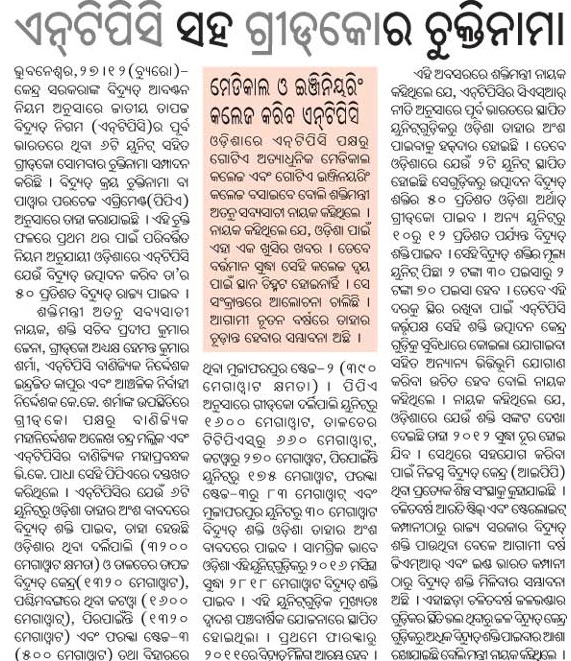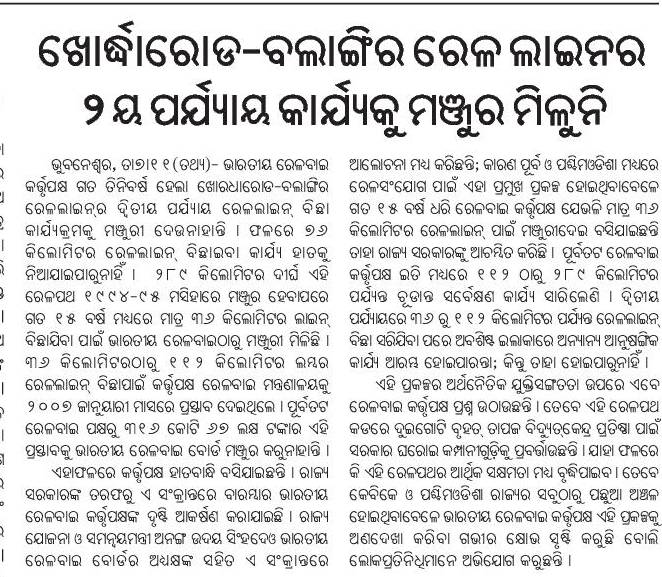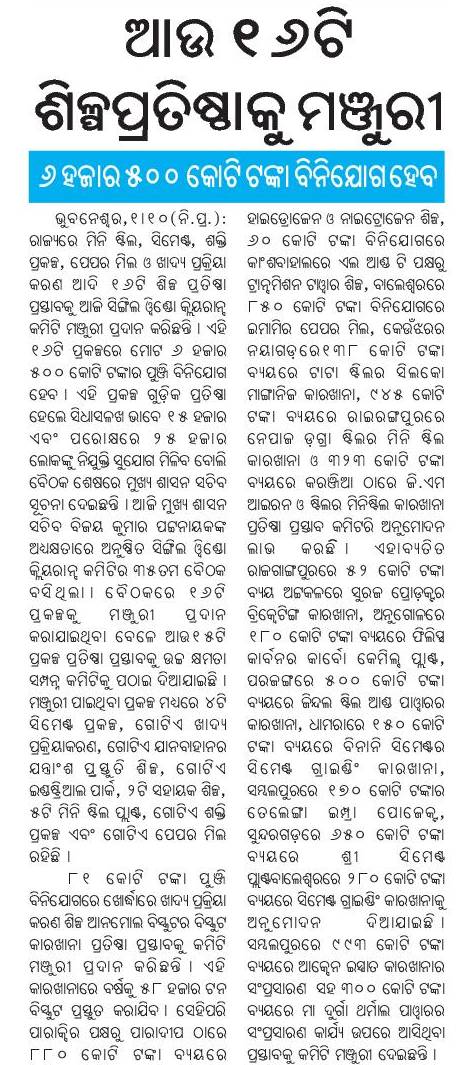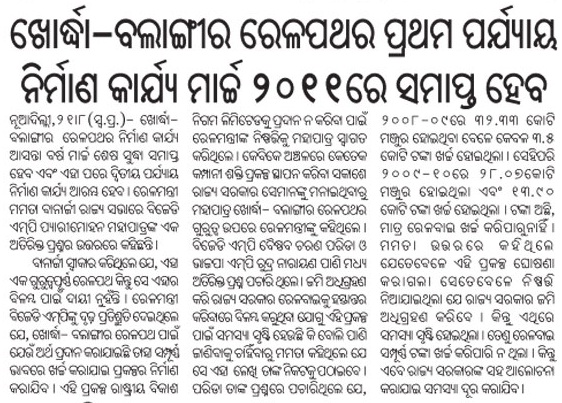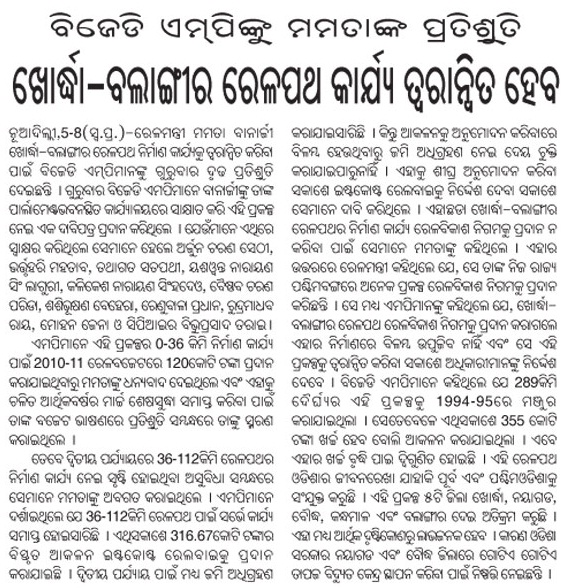Although there are tons of newsreports on the Saxena Committee report on Vedanta which quote extensively from the allegations of the committee there is very little (and mostly soundbites) from the perspective of the Odisha government and Vedanta.
The following by Nilmadhab Mohanty (a senior Fellow, Institute for Studies in Industrial Development, New Delhi) is from http://business.rediff.com/slide-show/2010/aug/25/slide-show-1-a-few-disturbing-questions-in-the-vedanta-issue.htm. I am not sure I agree with all the points mentioned below. But it is one of the few articles that is from the other side and hence worth pondering.
The decision of Union Minister for Environment and Forests Jairam Ramesh not to grant Stage II forest clearance to the proposal of the Orissa Mining Corporation (OMC) for bauxite mining in Niyamgiri in Orissa has been welcomed in many circles, in particular by the environmental activists, for the protection it will provide to an ecologically sensitive area of the country and to the Kondh tribes (and Dalits) living in the area.
There are, however a few disturbing questions that need to be answered by the ministry in order to buttress the minister’s claim that the decision was an objective one with no prejudice or politics influencing it.
First, the manner and time-line followed in the decision-making. The Orissa state government seems to have applied for final clearance in August 2009.
The Forest Advisory Committee (FAC) has been deliberating the proposal at least since November 2009. In addition to the information submitted by the State and the central government’s own agencies, it had the benefit of the recommendations made by a three-member expert group which submitted its report in February 2010.
FAC then asks for yet another committee under the Ministry of Tribal Affairs, which is the nodal agency in the central government for tribal rights. The environment minister, however, appoints his own committee (the Saxena Committee) in the last week of June 2010.
Then the pace quickens: The environment minister writes to the law ministry on July 19 to obtain the Attorney General’s opinion if the ministry of environment and forests (MoEF) apply its mind and decide in the light of the Supreme Court’s earlier decision giving forest clearance.
The AG replies promptly on the following day; Saxena submits report on August 16, FAC deliberates without much loss of time and submits recommendations on August 23, and the minister announces his decision with a 20-page reasoned order on August 24, 2010!
The must be a record in governmental working! The affected party, namely the Orissa government, is hardly given any chance to given an explanation to the MoEF.
In fact, the hapless Orissa officials seem to have met the minister on August 24 when he was in a tearing hurry to announce his decision!
Second, OMC’s proposal for forest clearance for the Niyamgiri bauxite mines is separate and distinct from Vedanta Aluminium Ltd’s (VAL) aluminum refinery project, although bauxite is meant for the refinery. Why have these two cases been mixed up in the minister’s order?
Forest clearance is a statutory requirement under the Forest Conservation Act 1980 and the FAC was deliberating on the subject on the request made by OMC/Orissa government and the minister is within his rights to act on their recommendation.
If VAL violated the conditions of its approval or even the Environment Protection Act, it could have been proceeded against separately.
After all, the MoEF’s eastern regional office had sent its communication reporting violations in May 2010. By combining the two issues the ministry gave the unfortunate impression that it was targetting Vedanta rather than dealing with forest clearance for Niyamgiri mines.
One of the major issues raised by the Saxena Committee and endorsed by the minister is the potential ecological and human costs of the mining project.
In fact, this is an issue which is relevant not so much during forest clearance procedure but more appropriately during the impact assessment study under the Environment Protection Act.
For Niyamgiri both ‘in principle’ forest clearance and environmental clearance had been given. Besides, the ‘in principle’ approval was given in October 2007, a month before the Supreme Court’s order on the subject.
Did the MoEF discover the ecological and human costs only after receiving the Saxena Committee report?
The main thrust of the Saxena Committee report and about the only valid reason for denying final forest clearance for the Niyamgiri mines appears to be the alleged non-recognition of the forest rights of the tribals and absence of consent from the concerned communities for diversion of forest land.
There seem to be a few complications on this issue. For one the Saxena Committee has given very liberal and wide-ranging definitions of ‘forest’ and ‘forest rights’ as per its interpretation of the Forest Rights Act. It is another matter that the interpretation of statutes is a responsibility of the courts, not of a committee appointed by a minister!
The Saxena Committee, for example, defines ‘forest’ to include ‘forest dwellers’ as well as ‘trees and wildlife’, literally overturning the Apex Court’s definition of ‘forest’ in the famous Godavarman case.
It also interprets communal and habitat rights of the primitive tribal groups to extend beyond their areas of residence to cover the entire eco-system.
Since the Forest Rights Act is a new piece of legislation these issues will need to be settled by the courts in due course of time, keeping in view the practicability of implementation.
In any case, the Orissa officials seem to have argued that they had complied with the legal requirements of the legislation (which, by the way, came long after the mining proposal was mooted) to the best of their ability.
Surely, Saxena and the MoEF cannot both be the prosecutor and the judge on this matter!
Also, what about development — both of minerals, which are the nation’s dormant resources, and the tribal groups, who inhabit the area?
From the Saxena Committee report (which is silent on this subject), it would appear that Mr Saxena would like them to continue as ‘forest dwellers’ in perpetuity so that they continue to enjoy their ‘forest rights’, living on roots and herbs and we continue showcasing their primitive tribal identity and abject poverty nationally and internationally!
Finally, what happens to the considerable investment that has gone into the industry?
Environmental and forest clearance procedures are about balancing the needs of development with those of conservation. To the extent possible the project proponents, including the state government, should be given an opportunity to correct the deficiencies. (After all it is the state government, not OMC/Sterlite-Vedanta, that has to settle the forest rights).
It is true that in extreme cases permission will have to be denied but that should have been before the start of the refinery when the required clearances were given.
To do so now will be unfair and damaging to the government’s reputation for objectivity.
Following is from Sreelatha Menon’s article in Business Standard regarding what violations the environment ministry claimed that occurred.
The Saxena Committee has drawn up a litany of infractions at Niyamgiri by both Vedanta and the Orissa government.
The road leading up to the Centre’s denial of permission to Vedanta Alumina Ltd to mine for bauxite in the Niyamagiri hills of Lanjigarh has been lined with gross violations and misrepresentation by both the company and the state government of Orissa.
The NC Saxena Committee, set up by the Ministry of Environment and Forests, details the manner in which laws have been flagrantly flouted to facilitate a project that has been aggressively opposed by tribal groups in the area.
The panel’s findings show that the Forest Rights Act, Forest Conservation Act, Environment Protection Act as well as Panchayats (Extension to Scheduled Areas) Act, which applies to scheduled tribes covered under Schedule V of the Constitution, have been the main casualties as far as the Vedanta project is concerned.
The alleged breach of laws by the company in collusion with the state government and made possible by the Centre’s neglect resulted in the company obtaining illegal possession of 26 hectares of village forest land without ever obtaining appropriate clearances. It was on the verge of launching mining operations the moment it received forest clearance, jeopardising not only the life and culture of the indigenous tribal groups, which are protected under Schedule V, but also in contempt of a statute expressly designed to empower tribal communities: the Forest Rights Act.
Felling the Forest Rights Act: The most blatant violation, the Saxena panel states, has been that of legislation drawn up specifically to give forest dwellers a voice. It also gives them the authority to agree or not to a project that affects the forests they lived in. In the case of the Vedanta project, the law just did not seem to exist. The state government chose not to consult gram sabhas of the villages or to issue any statement on their response to the Centre.
And in spite of this, 26 hectares of forest land has been in the possession of the company’s refinery and forest clearance for more forest land was pending for the mining project.
How PESA was ignored : According to the Saxena Committee, PESA , there was scant regard for the Panchayats (Extension to Scheduled Areas ) when it came to pushing the proposed mining lease for Vedanta. Indeed, the state government blatantly violated it.
This Act requires the authorities to consult elected village bodies such as a panchayat or Gram Sabha before the acquisition of land for any development projects located in tribal territories listed under Schedule V. Authorities also have to consult the Gram Sabha or Panchayat before resettling and rehabilitating those affected by such projects. None of this was done.
Stolen forests: The Saxena report lists several alleged irregularities by Vedanta in Niyamagiri. Occupation of village forest land for the construction of its refinery tops the list. On August 16, 2004, Vedanta Alumina submitted a proposal for the appropriation of 58.943 ha of forest land — 26.123 ha to set up a refinery at Lanjigarh and the remaining for a conveyor belt and a road to the mining site. The forest lands required for the refinery, in a number of small patches, traditionally belonged to the tribal and other communities in neighbouring villages.
However, while filing for environmental clearance on March 19, 2003, the company claimed that no forest land was needed and that there were no reserve forests within 10 km of the proposed refinery. The Saxena Committee says this claim was patently false, since the reserve forests are less than 2 km from the refinery site. Even the factory is located on forest land belonging to the villagers.
The Environment Ministry accorded environmental clearance to the refinery on September 22, 2004, on the basis that the project did not involve appropriation of forest lands. Since this clearance was acquired by submitting false information, it is invalid and should be revoked, the committee headed by Saxena had recommended.
EPA violations: The report also finds the company guilty of violating mandates of the Environment Protection Act (EPA). Environmental impact assessments required under the EPA are inadequate and do not examine the full implications of the refinery and mining project on the environment, particularly those related to hydrology. The report says no effort was made in the Vedanta mining project (and aluminium refinery) to solicit the informed consent of affected villages.
It says “the required number of public hearings’’ were not held and the” Environmental impact assessments, which contain data essential for informed decision-making and consent, were not made available. Even critical information, such as the fact that the project would occupy their village forest lands, was not disclosed.’’
In a 2003 public hearing, no member of the affected Dongaria Kondh tribe was recorded as being present—a basic violation of their right to consultation and informed consent. Besides suffering from the same shortcomings as the 2003 public hearings, a public hearing in 2009 for refinery expansion distorted and reinterpreted the proceedings: the official minutes of the meeting record that the project met with widespread community support, even though only one person out of 27 spoke in favour of the project.
Violator and polluter, too: When the environment ministry granted environmental clearance to the aluminium refinery, it was subject to strict compliance and identified a list of other key conditions for management of waste from the refinery. It also required that the company strictly adhere to the stipulations made by the Orissa State Pollution Control Board (OSPCB).
But in the course of the refinery’s operations between 2006 and 2009, Vedanta Alumina repeatedly failed to adhere to these requirements. Between 2006 and 2009, the OSPCB documented numerous instances whereby the company had failed to put in place adequate pollution control measures to meet not only its own conditions, but also those of the Environment Ministry. OSPCB findings indicate that the company commenced operations without the necessary systems to adequately manage waste and pollution. Some processing and waste management systems were not built or operated in conformity with applicable regulatory requirements.
Expansion without clearance: The most shocking violation on the part of the company has been its six-fold expansion of the refinery without even obtaining clearance from the ministry. It had received sanction to set up a capacity of 1 million tonnes, but it has gone on to expand to 6 million tonnes without any approvals. This was in spite OSPCB strictures to its January 12, 2009 memo, asking the company to immediately cease construction related to expansion of the refinery as it had not obtain the required permissions, including the environmental clearance.
Tribal groups, which have been fighting on behalf of the Dongaria Kondhs, are now finding these violations, especially Vedanta’s illegal possession of 26 hectares of forest land, as the starting point for the second part of their struggle. Says Prafulla Samantara, who petitioned the Supreme Court on behalf of the tribals: “The report calls the refinery illegal and it has to go. Our fight will continue until it is shut down.” But Saxena feels that the refinery may continue and get raw material from other mines.
The violations in the case of Vedanta have been documented and accepted by the Centre, with the ministry refusing permission for mining operations in Niyamagiri. Tribal groups ask if this report and the consequences would have any implications on several other projects where similar violations have been raised to deaf ears. Forest Rights Act violations have been alleged against Posco, as well as several other mining projects, but the state and Central governments have so far shown no indication of reviewing them, says Campaign for Survival and Dignity, an umbrella group of tribal rights organisations.
